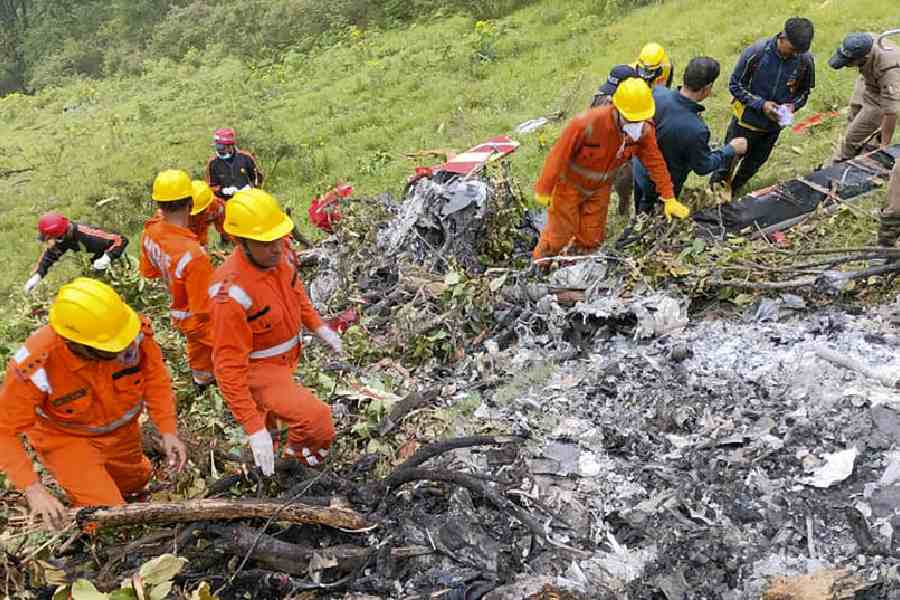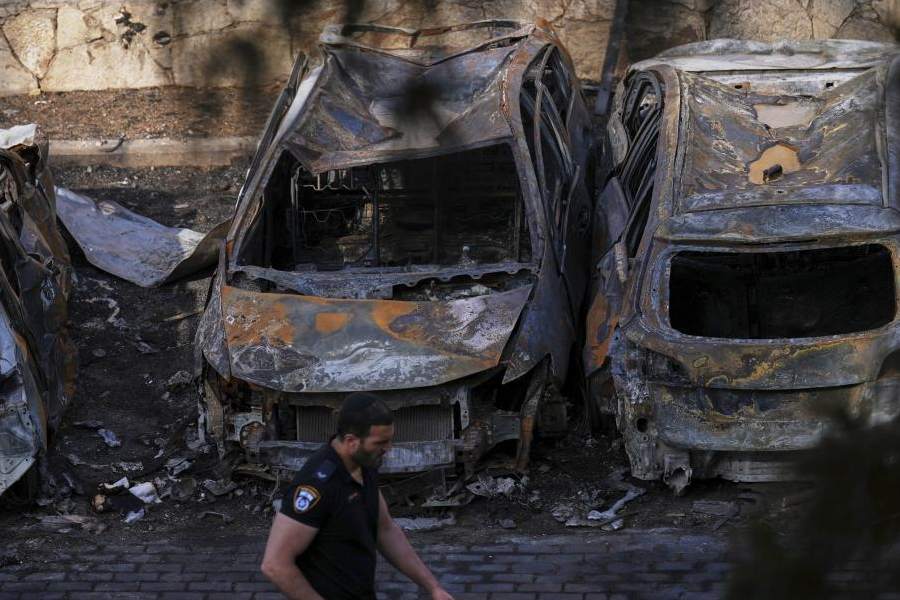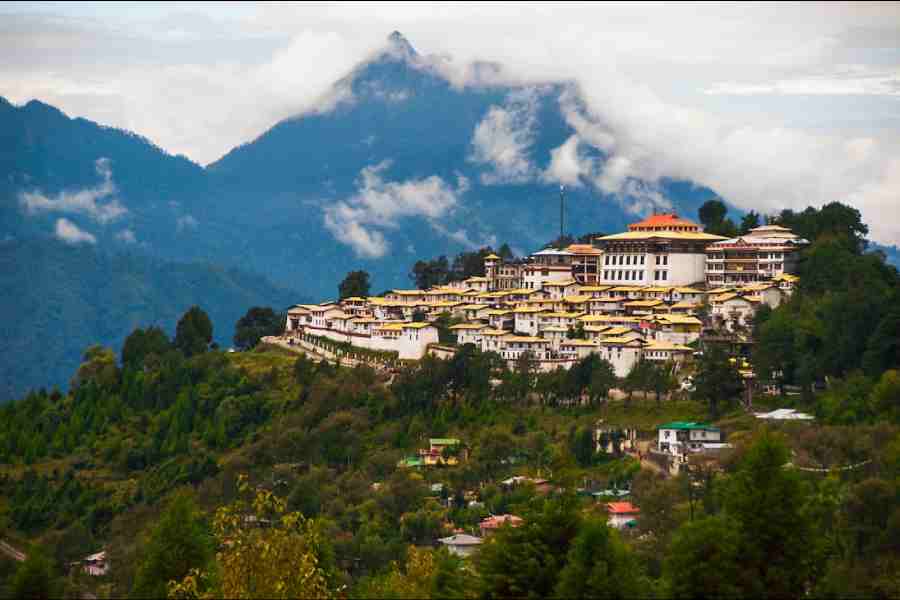|
|
The marvellous is the eruption of contradiction within the real.
— Louis Aragon
The dark and lovely irony is that Nitish Kumar is the child of Lalu Prasad. For thirty years, no less, he drifted under Lalu’s shadow before he began to gnash at it, moulting painfully from mate to reluctant protégé to tormentor before triumph came his way. Lalu had gorged too hard on the fruit of his flawed revolution; all Nitish had to do in the end was to shake the rot off and run away with the root. But it was Lalu’s gift all the same; more than 80 per cent of the vote Nitish lords over today is what Lalu consolidated in the first place. Happily for Bihar, he has given that gift the truth of Louis Aragon’s maxim on change. He has touched the contradictions in Lalu’s seed of empowerment, smothered the politicking strain and given impetus to the governance chromosome.
Lalu and his fairly shrunken ranks will, of course, have problems accepting that. Nitish and not politicking, they’d ask, since when? All he is doing in the name of governance is self-aggrandizement — breaking the extremely backward castes and Muslims away, creating new ranks of ‘Mahadalits’ within the Dalits, even nibbling away at the BJP’s urban upper-caste constituency with soft sophistry. It’s a charge Lalu Yadav cannot help making as the chief opposition in Bihar. It’s a charge Nitish should heartily accept — what politician doesn’t build a constituency for himself? In 1995, Nitish’s first open challenge to Lalu rule, in fatal alliance with the CPI(ML), yielded less than 4 per cent of the Bihar vote; today, he has in excess of 35 per cent. Lalu can complain all he wants about that, but Nitish is not obliged to feel guilty. He’s no bleeding-heart NGO out there to labour selflessly for Bihar’s redemption; in his business, he needs to feed on power in order to do justice to his chosen craft. At the moment, he is delivering more with his 35 per cent than Lalu ever did in his 15 years at the helm.
Endorsements from the likes of Amartya Sen — and Meghnad Desai, a couple of months ago — are not easy to come by, especially when they are meant for what’s a nationally accepted metaphor for a basket case: Bihar, off the map, irredeemably lost. Bihari, manufactured defective. You must be Bihari to feel the rough rub of it — an identity as allegory to mockery, when they’re being kind.
Patna was for long — and remains, in large measure — an obliging showcase to a dire state, rowdy and relentlessly ramshackle. It’s not a nice place to be in. But anyone who’s known Patna over time would tell you how much nicer it has turned lately. It is still quite the shabbiest capital we have, but spare a thought for the depths it is having to claw its way up from.
To insider and outsider alike, Patna was forever a place you sought escape from. Patna, cataclysm! To the likes of us — insider-outsiders — it was cataclysm revisited, time and time again. The old grandeur of its colonial quarters over-run by shacks and shanties and their attendant life forms — cows, buffaloes, pigs, mongrels. It’s new polish daily stained by the mucky residue of para-rural urge mating semi-urban chaos. A shimmering SUV marooned in a procession of handcarts and rickshaws. Hungry platoons from ruralia roving about that solitary island of glitter called the Dak Bungalow Chowk in search of work and food, bent on grabbing if they won’t get or be given. Cows mooing at designer apparel on a flea-and-fly-infested mannequin. The aroma of freshly dropped dung wafting into ice-cream parlours. Highrises sans electricity. A woman barely clad, infant suckling at her shrivelled breast, peddling pornography at the red light. A towering cardboard Lalu Prasad with a lantern bathed in the blaze of diesel-powered bulbs.
Should you go to Patna today, you’ll probably be assaulted by a similar slideshow of cracked contrariness — perhaps not Lalu Prasad, because he doesn’t stand so tall anymore, and the glow of his lantern has been admonished into dimness, but a lot of the same unpacked grimness. But should you have a practised eye on Patna, you’ll also see much that is changed and changing. Birchand Patel Path — Patna’s power street, which houses headquarters to most political parties — has not merely evolved into a spanking dual carriageway, it has also acquired service-lanes on either side.
The Circuit House, long dilapidated and crumbling, wears new sandstone cladding. The MLAs’ hostels have been cleared of their leprous open drains. The Boring Road neighbourhood — pig-ridden Patna posh — actually has garbage vats on streetcorners and streets freshly cobbled into walkways. There are more cobblestones piled up in other, less fortunate parts; work’s been ordered. And after dark, a sodium-vapour glow spews down on most of what used to be dingy darkness. It’s not known what reference-points Amartya Sen and Meghnad Desai had to measure where or how much Bihar has moved in the last few years, but both seem to have a keen sense of progress.
Along routes leading out to the heartland in every direction — north and south of the Ganges — there’s a new clamour of construction; dust, concrete, tar, earth-movers and road-rollers. Being on the road in Bihar is still an unnerving thing, but there’s a qualitative change to it — what’s unsettling today isn’t about stagnation and decay, it is about regeneration. And much more than regeneration, it is about the news of its impending arrival.
A lot of what has changed in the nearly four years that Nitish Kumar has helmed Bihar is merely cosmetic — smooth strips of road and road lighting, families out late and unafraid to show-off their finery, cleaner kerbs and façades, public utilities such as bus-stations and schools where you’ll see, more and more, schoolchildren and, at long last, teachers too.
But to note that, and nothing beyond, is to miss the point of what is changing. What is really changing in Bihar is not the visible or the tactile; the real change is happening invisibly in minds and psychologies, the dusting of corrosive cobwebs — cynicism and resignation. What is really changing is that hope has been rekindled — roads can be built, streets can be lit and broken bridges built, schools can become busy, criminals can be jailed, promises can be delivered, if only slowly, if only patchily. Crime has not been erased from Bihar or its politics — the squeaky-clean Nitish Kumar himself unabashedly harbours the likes of Anant Singh and Munna Shukla — but, equally, the sense is that it is being contained. Power is yet to reach most of the state’s darkness, but there is renewed expectation that it is on its way. Old sub-stations in C-towns are under repair or replacement, new power projects have been assured. They are merely assurances, no doubt, but the difference is that when Nitish Kumar makes an assurance, most tend to believe. With Lalu Prasad, it was most often the opposite.
Lalu Prasad’s record in Bihar betrayed little evidence of his inclination to matters of governance. On the contrary, he systematically dismantled governance during his 15 years at the helm, either directly or through proxy. He discouraged ministerial excellence and bureaucratic initiative; he displayed a positive disinterest in governance and a dislike for those who tried to nudge him in that direction. Among the many reasons for his rupture with Nitish Kumar was this as well. Nitish wanted the government to govern and was ready to shoulder the responsibility, while Lalu Yadav extended the Mandal revolution from the pulpit. Lalu Yadav thought Nitish meant to undermine him. In the process, what got readily undermined was the State itself and its many tasks. Corrections were urgently required, and they have only just begun to happen. Nitish Kumar has a long way to go, and he has a keen sense of that distance. The dark and unlovely irony is that Lalu Prasad still does not.











